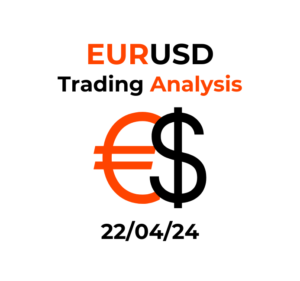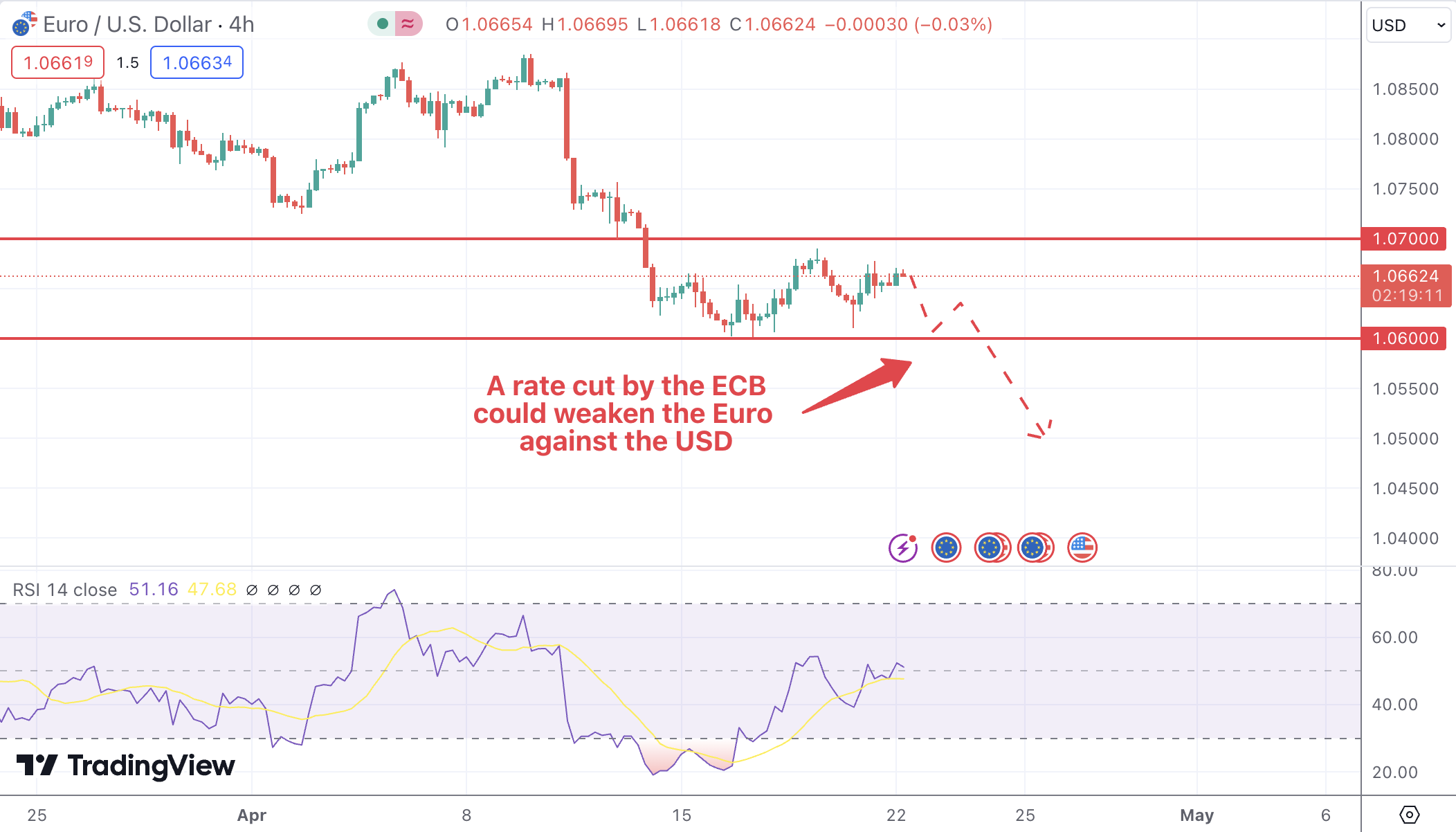As we examine the EUR/USD market dynamics, the convergence of crucial economic data and central bank actions from both Europe and the United States outlines a challenging landscape for traders this week. Here’s an in-depth look based on recent data and trends.
Fundamental Economic Drivers
The Euro has encountered a challenging situation marked by the European Central Bank’s (ECB) shifting monetary policies and ongoing geopolitical tensions affecting market sentiments. Recently, the ECB suggested potential rate cuts soon, a move that could weaken the Euro against other major currencies.
Conversely, the U.S. dollar has maintained its strength, supported by economic indicators that point to a strong economic foundation. Important reports such as the U.S. GDP and core PCE data showed an economy that might deter the Federal Reserve from immediate rate reductions, giving the dollar an advantage.
Technical Analysis and Market Reaction
Technically, EUR/USD has tested critical support levels, particularly around the 1.0600 mark. After reaching lows, there was a modest rebound above 1.0650, spurred by brief market corrections and a slight retreat of the dollar as traders took profits before the weekend. However, the pair remains below the 1.0700 resistance area, indicating that any upward movement is likely to face challenges.
The Relative Strength Index (RSI) on the 4-hour chart suggests a tentative easing of selling pressure. However, the ECB’s outlook could limit any significant gains unless there are unexpected developments in U.S. monetary policy or geopolitical events.
Geopolitical Influences
Recent international events have also played a significant role in influencing market dynamics. The ongoing tensions between Israel and Iran have led to risk-averse trades, typically benefiting the safe-haven U.S. dollar. Such events underscore the fragile nature of current market balances and how quickly sentiment can shift in response to international news.
Upcoming Economic Data
Looking ahead, traders will pay close attention to the forthcoming data from both the Eurozone and the United States. Key indicators include the Eurozone’s PMI data, which could provide further insights into the economic trajectory and potentially influence the ECB’s policy decisions. Similarly, any new data on U.S. employment and inflation could influence the Federal Reserve’s rate decisions, impacting the EUR/USD pair.
Market Sentiment and Predictions
Market sentiment remains cautiously pessimistic for the Euro due to anticipated ECB rate cuts and the potential for escalated geopolitical conflicts. However, any positive surprises in Eurozone economic data or a less aggressive stance by the Fed could offer the Euro some relief.
Conclusion
In conclusion, EUR/USD traders are poised for a week filled with potential volatility driven by economic data releases and central bank activities. The ongoing geopolitical risks also add a layer of uncertainty that could swiftly influence market directions. A careful approach combined with vigilant monitoring of emerging trends and data will be crucial for navigating the EUR/USD in the days ahead.


